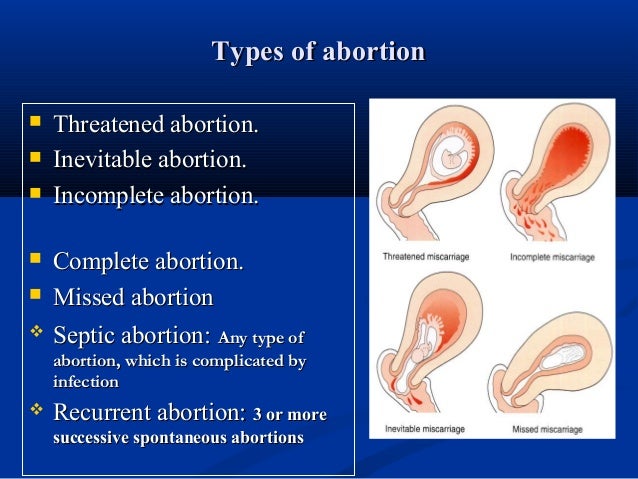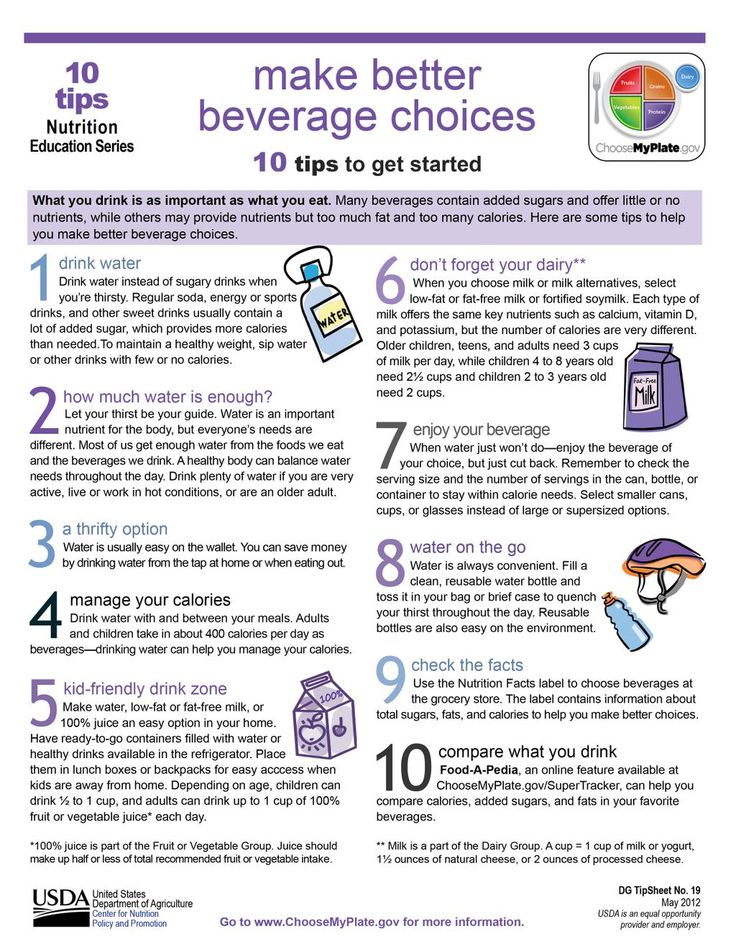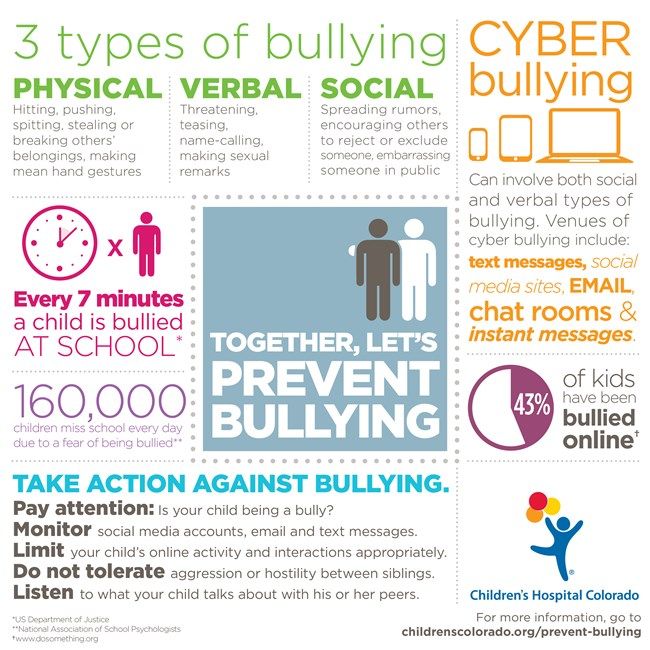How to fix child behavior problems
Dealing with child behaviour problems
There are lots of possible reasons for difficult behaviour in toddlers and young children.
Often it's just because they're tired, hungry, overexcited, frustrated or bored.
How to handle difficult behaviourIf problem behaviour is causing you or your child distress, or upsetting the rest of the family, it's important to deal with it.
Do what feels right
What you do has to be right for your child, yourself and the family. If you do something you do not believe in or that you do not feel is right, it probably will not work. Children notice when you do not mean what you're saying.
Do not give up
Once you've decided to do something, continue to do it. Solutions take time to work. Get support from your partner, a friend, another parent or your health visitor. It's good to have someone to talk to about what you're doing.
Be consistent
Children need consistency. If you react to your child's behaviour in one way one day and a different way the next, it's confusing for them. It's also important that everyone close to your child deals with their behaviour in the same way.
Try not to overreact
This can be difficult. When your child does something annoying time after time, your anger and frustration can build up.
It's impossible not to show your irritation sometimes, but try to stay calm. Move on to other things you can both enjoy or feel good about as soon as possible.
Find other ways to cope with your frustration, like talking to other parents.
Talk to your child
Children do not have to be able to talk to understand. It can help if they understand why you want them to do something. For example, explain why you want them to hold your hand while crossing the road.
Once your child can talk, encourage them to explain why they're angry or upset. This will help them feel less frustrated.
Be positive about the good things
When a child's behaviour is difficult, the things they do well can be overlooked.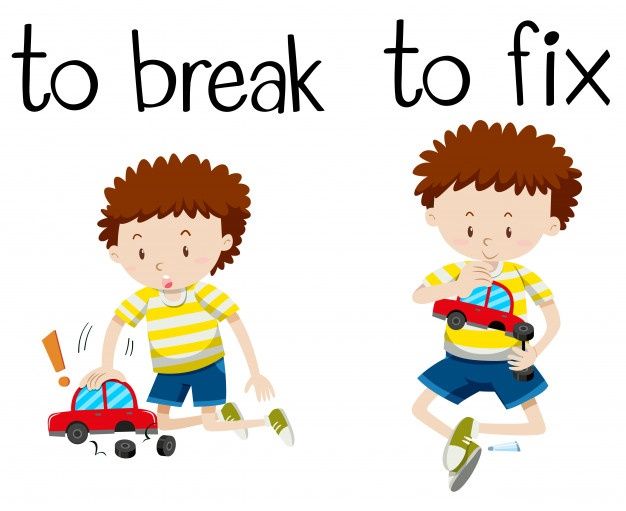 Tell your child when you're pleased about something they've done. You can let your child know when you're pleased by giving them attention, a hug or a smile.
Tell your child when you're pleased about something they've done. You can let your child know when you're pleased by giving them attention, a hug or a smile.
Offer rewards
You can help your child by rewarding them for good behaviour. For example, praise them or give them their favourite food for tea.
If your child behaves well, tell them how pleased you are. Be specific. Say something like, "Well done for putting your toys back in the box when I asked you to."
Do not give your child a reward before they've done what they were asked to do. That's a bribe, not a reward.
Avoid smacking
Smacking may stop a child doing what they're doing at that moment, but it does not have a lasting positive effect.
Children learn by example so, if you hit your child, you're telling them that hitting is OK. Children who are treated aggressively by their parents are more likely to be aggressive themselves. It's better to set a good example instead.
Things that can affect your child's behaviour- Life changes – any change in a child's life can be difficult for them.
 This could be the birth of a new baby, moving house, a change of childminder, starting playgroup or something much smaller.
This could be the birth of a new baby, moving house, a change of childminder, starting playgroup or something much smaller. - You're having a difficult time – children are quick to notice if you're feeling upset or there are problems in the family. They may behave badly when you feel least able to cope. If you're having problems do not blame yourself, but do not blame your child either if they react with difficult behaviour.
- How you've handled difficult behaviour before – sometimes your child may react in a particular way because of how you've handled a problem in the past. For example, if you've given your child sweets to keep them quiet at the shops, they may expect sweets every time you go there.
- Needing attention – your child might see a tantrum as a way of getting attention, even if it's bad attention. They may wake up at night because they want a cuddle or some company. Try to give them more attention when they're behaving well and less when they're being difficult.
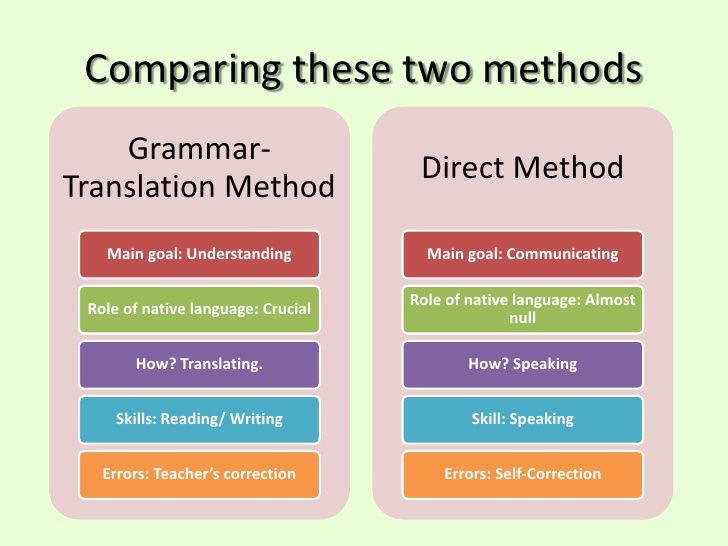
Do not feel you have to cope alone. If you're struggling with your child's behaviour:
- talk to your health visitor – they will be happy to support you and suggest some new strategies to try
- visit the Family Lives website for parenting advice and support, or phone their free parents' helpline on 0808 800 2222
- download the NSPCC's guide to positive parenting
Read coping with your teenager.
Video: how much does my child understand about being naughty? (6 to 30 months)
In this video, a health visitor explains whether your child understands about being naughty.
Media last reviewed: 17 August 2020
Media review due: 17 August 2023
Page last reviewed: 9 April 2020
Next review due: 9 April 2023
How To Change Your Childs Behavior - Child Tantrum
Related Topics
There are many things that can cause a child to have temper tantrums, emotional outbursts, and general “bad” or unexpected behavior.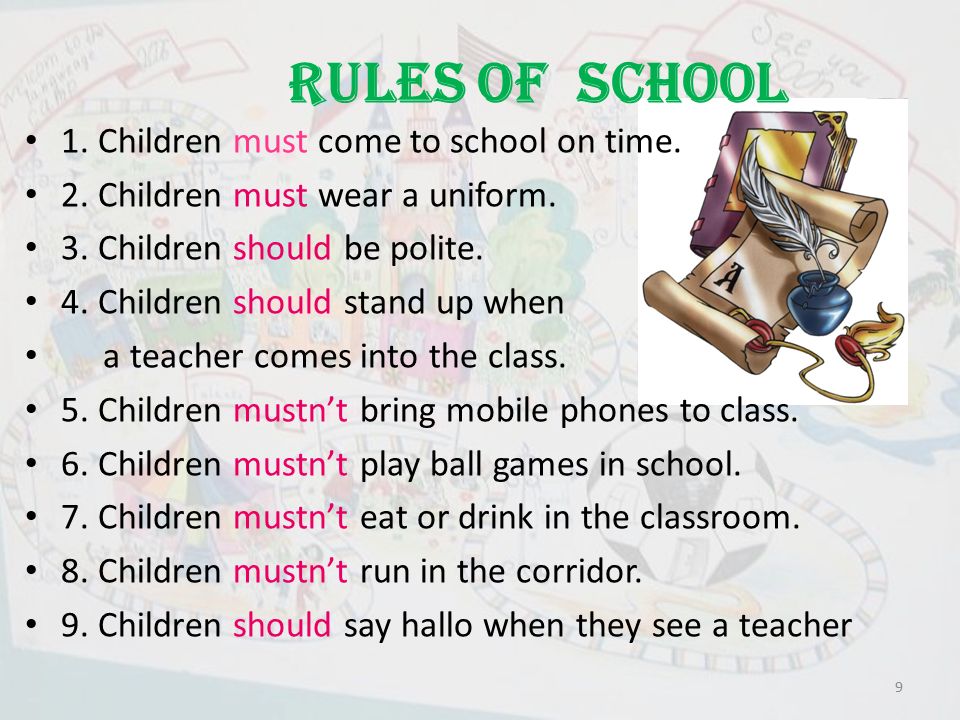 These can include biological reasons, like being hungry or overtired. It can include communication issues related to learning challenges. It also can include emotional reasons, like not being able to cope with or describe their feelings. Their environment can also influence behavior.
These can include biological reasons, like being hungry or overtired. It can include communication issues related to learning challenges. It also can include emotional reasons, like not being able to cope with or describe their feelings. Their environment can also influence behavior.
What is normal behavior for a child?
Normal behavior in children depends on the child’s age, personality, and physical and emotional development. A child’s behavior may be a problem if it doesn’t match the expectations of the family or if it is disruptive. Normal or “good” behavior is usually determined by whether it’s socially, culturally, and developmentally appropriate. Knowing what to expect from your child at each age will help you decide whether his or her behavior is normal.
Remember, no child has perfect behavior. Your child’s doctor, preschool, and school will be helpful in setting expectations for your child and his or her age and development.
What can I do to change my child’s behavior?
Children tend to continue a behavior when it is rewarded and stop when it is ignored.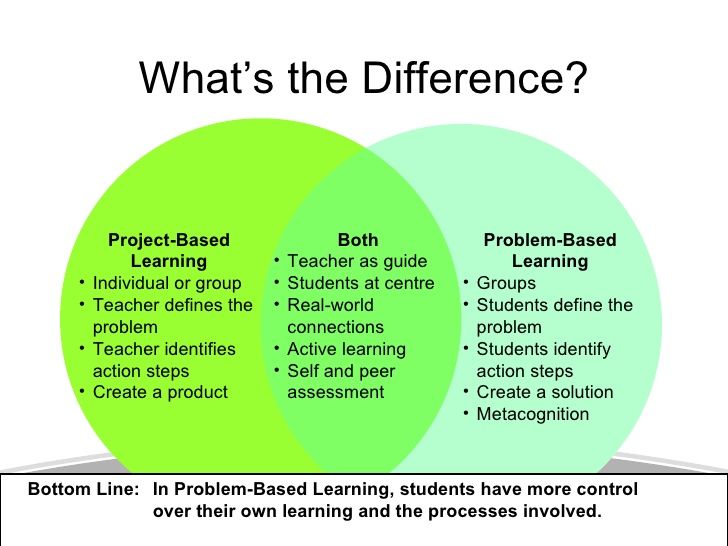 Being consistent is important because rewarding and punishing the same behavior at different times confuses your child. When you think your child’s behavior might be a problem, you have 3 choices:
Being consistent is important because rewarding and punishing the same behavior at different times confuses your child. When you think your child’s behavior might be a problem, you have 3 choices:
- Decide that the behavior is not a problem because it’s appropriate to the child’s age and stage of development.
- Attempt to stop the behavior, either by ignoring it or by punishing it.
- Introduce a new behavior that you prefer and reinforce it by rewarding your child.
Path to Well Being
The best way to stop unwanted behavior is to ignore it. This way works best over a period of time. When you want the behavior to stop immediately, you can use the time-out method.
How do I use the time-out method?
Decide ahead of time which behaviors require a time out (usually these are tantrums, or aggressive or dangerous behavior). Choose a time-out place with no distractions and not frightening, such as a chair, corner, or playpen. When you’re away from home, consider using a car or a nearby seating area as a time-out place.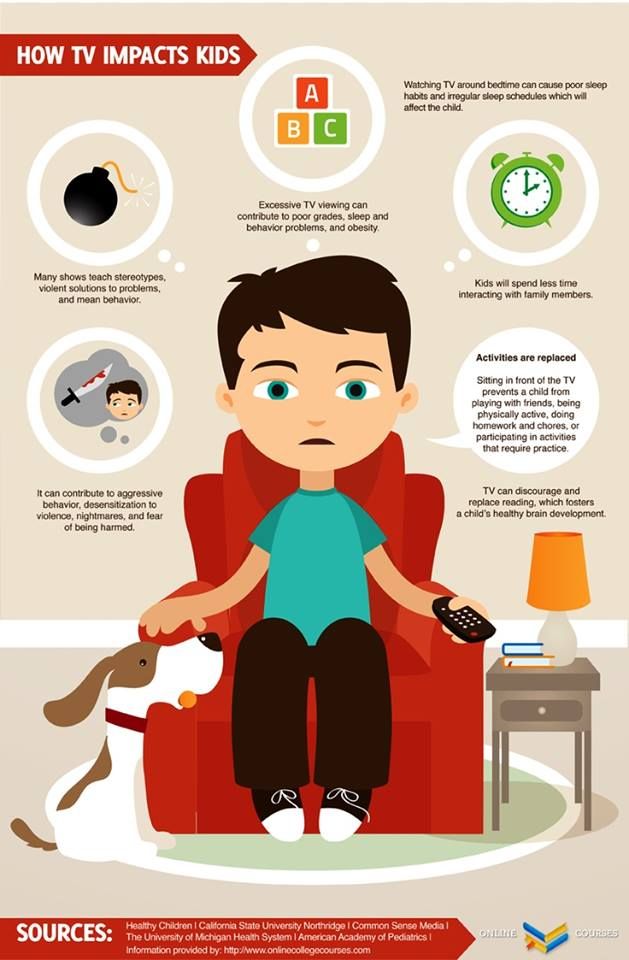
When the unacceptable behavior occurs, tell the child the behavior is unacceptable and give a warning that you will put him or her in time-out if the behavior doesn’t stop. Remain calm and don’t look angry. If your child continues misbehaving, calmly take him or her to the time-out area.
Keep track of how long your child’s been in time out. Set a timer so your child will know when time out is over. Time out should be brief (generally 1 minute for each year of age) and should begin immediately after the behavior or after the child calms down. You should stay within sight or earshot of the child, but don’t talk to him or her. If the child leaves the time-out area, gently return him or her to the area and consider resetting the timer. When the time out is over, let the child leave the time-out place. Don’t discuss the bad behavior but look for ways to reward and reinforce good behavior later on.
How do I encourage a new, desired behavior?
One way to encourage good behavior is to use a reward system. Children eventually learn that bad behavior is unacceptable and good behavior is rewarded. This works best in children older than 2 years of age. It can take up to 2 months to work. Being patient and keeping a diary of behavior can be helpful to parents.
Children eventually learn that bad behavior is unacceptable and good behavior is rewarded. This works best in children older than 2 years of age. It can take up to 2 months to work. Being patient and keeping a diary of behavior can be helpful to parents.
Choose 1 to 2 behaviors you would like to change (for example, bedtime habits, teeth brushing, or toy cleanup). Choose a reward your child would enjoy. Examples of good rewards are an extra bedtime story, delaying bedtime by half an hour, a preferred snack, or for older children, stickers, earning points toward a special toy or a privilege.
Explain the desired behavior and the reward to the child. For example, tell the child, “If you get into your pajamas and brush your teeth before this TV show is over, you can stay up a half hour later.” Request the behavior only one time. If the child does what you ask, give the reward. You can help the child, if necessary, but don’t get too involved. Because any attention from parents, even negative attention, is so rewarding to children, they may prefer to have a parent’s attention instead of a reward at first.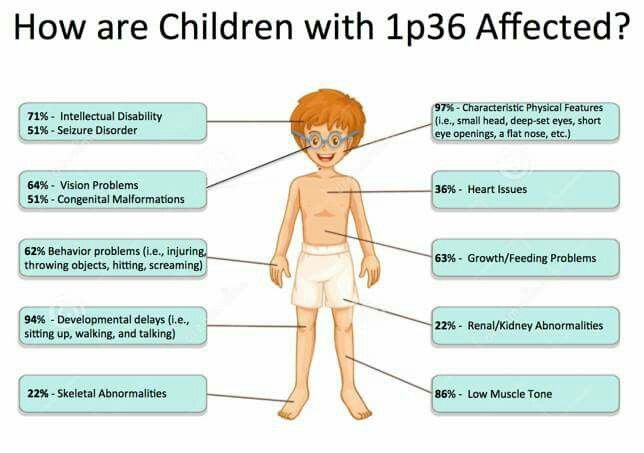 Transition statements, such as, “in 5 minutes, play time will be over,” are helpful when you are teaching your child new behaviors.
Transition statements, such as, “in 5 minutes, play time will be over,” are helpful when you are teaching your child new behaviors.
This system helps you avoid power struggles with your child. However, don’t punish your child if he or she chooses not to behave as you ask. He or she simply does not get the reward.
What are some good ways to reward my child?
Beat the Clock (good method for a dawdling child)
Ask the child to do a task. Set a timer. If the task is done before the timer rings, your child gets a reward. To decide the amount of time to give the child, figure out your child’s “best time” to do that task and add 5 minutes.
The Good Behavior Game (good for teaching a new behavior)
Write a short list of good behaviors on a chart and mark the chart with a star each time you see the good behavior. After your child has earned a small number of stars (depending on the child’s age), give him or her a reward.
Good Marks/Bad Marks (best method for difficult, highly active children)
In a short time (about an hour) put a mark on a chart or on your child’s hand each time you see him or her performing a good behavior. For example, if you see your child playing quietly, solving a problem without fighting, picking up toys, or reading a book, mark the chart. After a certain number of marks, give your child a reward. You can also make negative marks each time a bad behavior occurs. If you do this, only give your child a reward if there are more positive marks than negative marks.
For example, if you see your child playing quietly, solving a problem without fighting, picking up toys, or reading a book, mark the chart. After a certain number of marks, give your child a reward. You can also make negative marks each time a bad behavior occurs. If you do this, only give your child a reward if there are more positive marks than negative marks.
Developing Quiet Time (often useful when you’re making supper)
Ask your child to play quietly alone or with a sibling for a short time (maybe 30 minutes). Check on your child frequently (every 2 to 5 minutes, depending on the child’s age) and give a reward or a token for each few minutes they were quiet or playing well. Gradually increase the times (go from checking your child’s behavior every 2 to 5 minutes to checking every 30 minutes) but continue to give rewards for each time period your child was quiet or played well.
What if my child’s behavior is caused by attention deficit hyperactivity disorder or sensory processing disorder?
If your child has sensory issues (sometimes called sensory processing disorder or SPD) or attention deficit hyperactivity disorder (ADHD), he or she may be unable to sit still.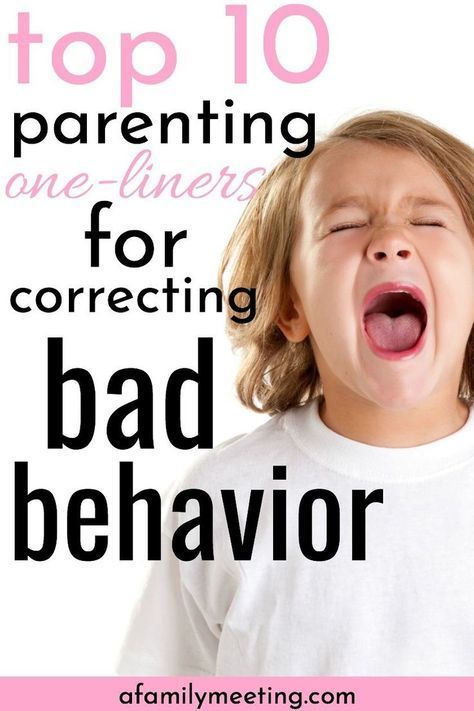 Children with SPD and ADHD also may have very limited self-control. This can make parenting more challenging. Children who have these disorders often do no respond to punishments or rewards.
Children with SPD and ADHD also may have very limited self-control. This can make parenting more challenging. Children who have these disorders often do no respond to punishments or rewards.
Most often, parenting a child with ADHD and SPD requires you to deal with their emotions first and behavior second. There are many ways to help teach a child with ADHD or SPD to deal with their emotions. These include breathing exercises, using an emotional levels chart, and using deep pressure as a way to calm them. Only after your child is calm can you begin to explain why his or her behavior was not appropriate or unexpected. Over time, he or she may begin to learn self-regulation of emotions. This may help with behavior.
What else can I do to help my child behave well?
Make a short list of important rules and go over them with your child. Rules should relate to safety, health, and how to treat others. The fewer the rules, the less rule-breaking behavior you may have to deal with. Avoid power struggles, no-win situations, and extremes. When you think you’ve overreacted, it’s better to use common sense to solve the problem, even if you have to be inconsistent with your reward or punishment method. Avoid doing this often as it may confuse your child.
Avoid power struggles, no-win situations, and extremes. When you think you’ve overreacted, it’s better to use common sense to solve the problem, even if you have to be inconsistent with your reward or punishment method. Avoid doing this often as it may confuse your child.
Accept your child’s basic personality, whether it’s shy, social, talkative, or active. Basic personality can be changed a little, but not very much. Try to avoid situations that can make your child cranky, such as becoming overly stimulated, tired, or bored. Don’t criticize your child in front of other people. Describe your child’s behavior as bad, but don’t label your child as bad. Praise your child often when he or she deserves it. Touch him or her affectionately and often. Children want and need attention from their parents.
Develop little routines and rituals, especially at bedtimes and mealtimes. Provide transition remarks (such as “in 5 minutes, we’ll be eating dinner.”). Allow your child choices whenever possible.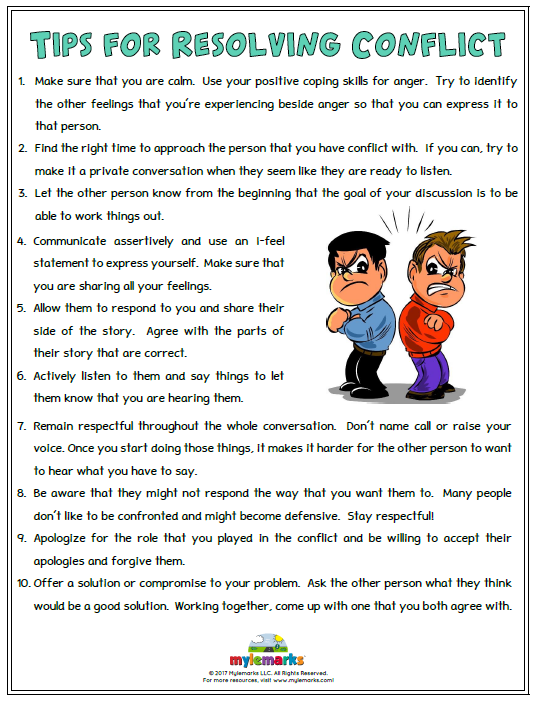 For example, you can ask, “Do you want to wear your red pajamas or your blue pajamas to bed tonight?” “Do you want me to carry you to bed or do you want to go all by yourself?” “Which book do you want to read?”
For example, you can ask, “Do you want to wear your red pajamas or your blue pajamas to bed tonight?” “Do you want me to carry you to bed or do you want to go all by yourself?” “Which book do you want to read?”
As children get older, they may enjoy becoming involved in household rule making. Don’t debate the rules when your child misbehaves. Invite your child to participate in rule-making at another time.
Things to consider
Parents may choose to use physical punishment (such as spanking) to stop undesirable behavior. The biggest drawback to this method is that although the punishment stops the bad behavior for a while, it doesn’t teach your child to change his or her behavior. Disciplining your child is really just teaching him or her to choose good behaviors. If your child doesn’t know a good behavior, he or she is likely to return to the bad behavior. Physical punishment becomes less effective with time and can cause the child to behave aggressively. It can also be carried too far into child abuse.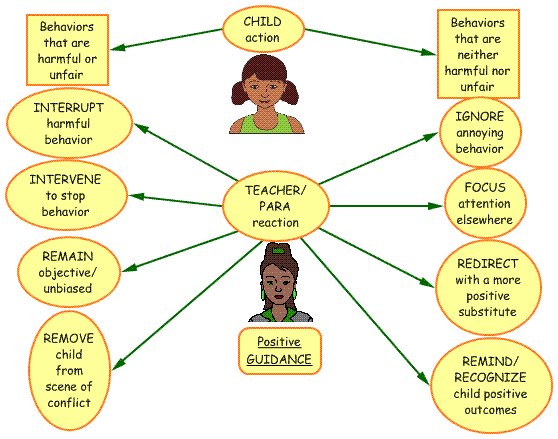 Other methods of punishment are preferred and should be used whenever possible.
Other methods of punishment are preferred and should be used whenever possible.
Questions to ask your doctor
- Does my child have a behavior disorder?
- Does my child have attention deficit disorder (ADD)?
- Does my child have an autism spectrum disorder?
- Could my child grow out of his or her bad behavior?
- What should I do if I’m afraid my child could physically hurt someone?
- What should I do if I’m afraid my child may hurt himself or herself?
- Would medicine help control my child’s behavior?
Resources
Child Discipline
What’s the Best Way to Discipline My Child?
90,000 problem behavior of a child: 6 useful tips to parents13.10.16
Recommendations of behavioral analyst, expert of the Foundation "Exit", Dr. Stephanie Peterson
9000
Dr. Stephanie Peterson-behavioral analyst (BCBA-D) , professor at the Department of Psychology at Western Michigan University (USA), member of the Department of Applied Behavior Analysis. He specializes in various aspects of the reinforcement process, the role of communication in problem behavior, behavioral technologies in correctional education, distance learning for autism specialists, and inclusive school education practices. nine0015
He specializes in various aspects of the reinforcement process, the role of communication in problem behavior, behavioral technologies in correctional education, distance learning for autism specialists, and inclusive school education practices. nine0015
First of all, I want to emphasize that I'm going to talk about "normal" behavioral problems that parents face. These tips are also useful for children with severe behavioral disorders, but if a child has serious problematic behavior, such as self-injury, he will most likely need other methods of correction, and not just the simple rules that we will talk about now.
These recommendations are more likely to be called "prevention" of behavioral problems. By following these tips, parents can prevent the development of problem behavior in the first place. nine0003
The first thing parents need to understand is that a child's behavior is largely dependent on their own behavior. What parents say and do sets the stage for both desirable and undesirable behavior. When a desired or undesired behavior occurs, the immediate reaction of the parents will determine whether the behavior will occur more or less frequently in the future. And that's great news for parents!
When a desired or undesired behavior occurs, the immediate reaction of the parents will determine whether the behavior will occur more or less frequently in the future. And that's great news for parents!
Very often parents say: “My child behaves this way because he has autism”, “My child behaves this way because he has a fatherly character”, “My child behaves this way because he has Down syndrome” etc. We all have a tendency to attribute behavior to internal causes that we can't do anything about. However, in reality, many, not all, but many types of human behavior are largely controlled by environmental factors. So in most cases, you can change behavior by changing the context in which it occurs. So this news is great! nine0003
So, there are several strategies by which parents can change the context of behavior and can create "conditions of success" for the child.
1. Monitor Good Behavior
Parents need to keep a close eye on their child and try to "catch" him doing something good. It's too easy for parents, when a child behaves well, to simply say to themselves: "Great, the child plays well, I can switch to my own affairs." For example, mom goes to another room to do laundry or cook dinner, because everything is quiet and calm. Therefore, it turns out that when the desired behavior occurs, no one pays attention to it. nine0003
It's too easy for parents, when a child behaves well, to simply say to themselves: "Great, the child plays well, I can switch to my own affairs." For example, mom goes to another room to do laundry or cook dinner, because everything is quiet and calm. Therefore, it turns out that when the desired behavior occurs, no one pays attention to it. nine0003
So the first thing I recommend to parents is to specifically look for good behaviors in a child, and make sure that when the child behaves well, you somehow notice it, even if you just say: “What a good job you are!” Praise your child for good behavior, pay attention to him. Make sure that when the child behaves well, he gets something for it, that such behavior is beneficial for him.
Otherwise, very often it turns out that when a child behaves well, everyone ignores him, but when he starts to play around and do something wrong, the parents immediately run up to him: “What are you doing? I asked you not to mess around! I have to cook dinner! Why can't you just play with your brother?" And it turns out that in order to get parental attention, to get mom to return to the room, the child needs to behave badly again.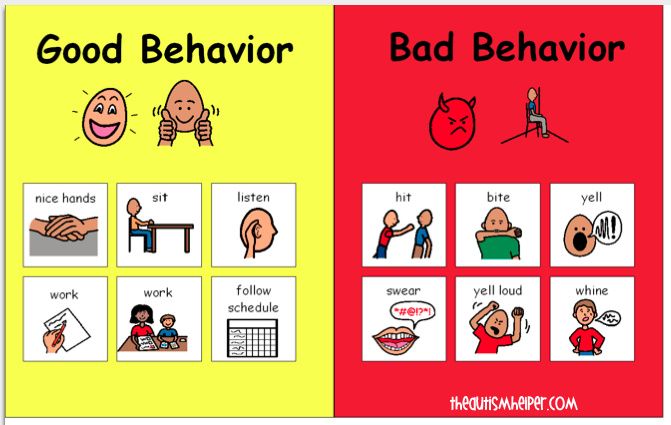 And this is a trap that is easy to fall into. nine0003
And this is a trap that is easy to fall into. nine0003
Therefore, it is important to develop the habit of being aware of how the child is behaving now, "catching" his good behavior, paying attention to it and praising or otherwise encouraging him as often as possible.
2. If the behavior is problematic, think about its causes
If the unwanted behavior does occur, think about what exactly the child gets as a result. There must be something that makes this behavior beneficial for the child. It could be your attention, as in the earlier example. This may be a specific reaction of an adult or another child that he wants to evoke. Maybe the toy was taken away from him and he is arguing because he wants to get the toy back? Or is he screaming because you asked him to do something he doesn't want to do? Try to determine what he is trying to get in this way. nine0003
If you succeed, then, if possible, try to make sure that this behavior does not lead to the consequences that the child needs. For example, if a child fights to get a toy, make sure he doesn't get the toy. Instead, wait until the behavior stops. When the child has calmed down, tell him more appropriate behavior, for example, he can say: "Give me the car, please." Make sure the child receives the toy only in response to socially acceptable behavior, not in response to screaming. nine0003
For example, if a child fights to get a toy, make sure he doesn't get the toy. Instead, wait until the behavior stops. When the child has calmed down, tell him more appropriate behavior, for example, he can say: "Give me the car, please." Make sure the child receives the toy only in response to socially acceptable behavior, not in response to screaming. nine0003
I understand that this is not always possible, but try your best. And if you succeed, you will see that the child switches to the desired behavior because it works, and the problematic behavior is no longer useful.
3. Specially plan situations in which the child will be able to practice the desired behavior
Very often, especially if the child has developmental features, parents begin to "foresee" his desires and needs. For example: “Oh, at dinner he will definitely want to drink juice. You need to put the juice on the table. Oh, and his juice is almost over, you need to pour more, otherwise he will cry. Perhaps the child does not have good speech skills, so the mother or grandmother thinks they are helping, because the child himself cannot ask for juice. The problem is that when you anticipate a child's wishes and he doesn't have to ask for anything, you don't give the child the opportunity to practice good behavior. nine0003
The problem is that when you anticipate a child's wishes and he doesn't have to ask for anything, you don't give the child the opportunity to practice good behavior. nine0003
I urge you to try as often as possible to create situations in which the child can demonstrate the desired skills. Tell him, teach him. In some situations, you can tell the child to use an existing skill, in others, you need to teach the child a new one. For example, in the juice example, if the child has speech problems, then other ways should be identified by which the child can ask for what he needs. In the US, we often use American Sign Language and a child can learn to make the "drink" sign, for example, it's a very simple gesture. And the next time the child runs out of juice, I can take a pack of juice and prompt the child to make a “drink” gesture. I can show the child what he has to do. If the child still does not make the necessary gesture, I can take his hand and help him, then I will say: “Yes, juice!” and give him juice. And now I have taught the child what to do, I have provided him with a tool to control the outside world. nine0003
And now I have taught the child what to do, I have provided him with a tool to control the outside world. nine0003
4. Make your expectations as specific and clear as possible
Another very important strategy is to break each child's task into small, clear steps. There are a couple of mistakes that I see very often with parents, and one of those mistakes is vague and abstract requirements.
For example, if I say to my daughter, "Clean up your room," that phrase might mean one thing to me and something completely different to her. My criteria for a clean room and her criteria are not necessarily the same. Sometimes for her this means: "Gather up all the things that are lying around in the room, stuff them in the closet and close the door." And it may seem to me that the room looks good, but only until the moment when I open the closet and a bunch of things fall out on me. nine0003
A more specific instruction, in this case, would be something like this: "Collect all the clothes that are lying around in the room, hang them in the closet on hangers or fold them and put them in the laundry box. " In this way, my expectations become much clearer.
" In this way, my expectations become much clearer.
Another point that is important to pay attention to is that the task should be divided into simple and specific steps, each of which can be easily dealt with. So I can say, "Pick up these clothes and hang them in the closet." After this is done, I, first of all, will have to praise her (we remember - it is important to emphasize good behavior): “Just wonderful, thank you so much!” Then I can say, "Part of the work is done, now let's pick up these clothes and put them in a drawer" or "Let's put these toys in a container." nine0003
If I am specific, if I divide the task into small parts, then the likelihood that my requirements will be met will increase significantly. And I can praise her after every step, "catch" her for good behavior.
There are a lot of scientific studies that show that the formulation of your requirements is of great importance. So if I say: “Stop running!”, I am unlikely to achieve what I want. But if I say, "Come with me," then the likelihood that I will be listened to will be much higher.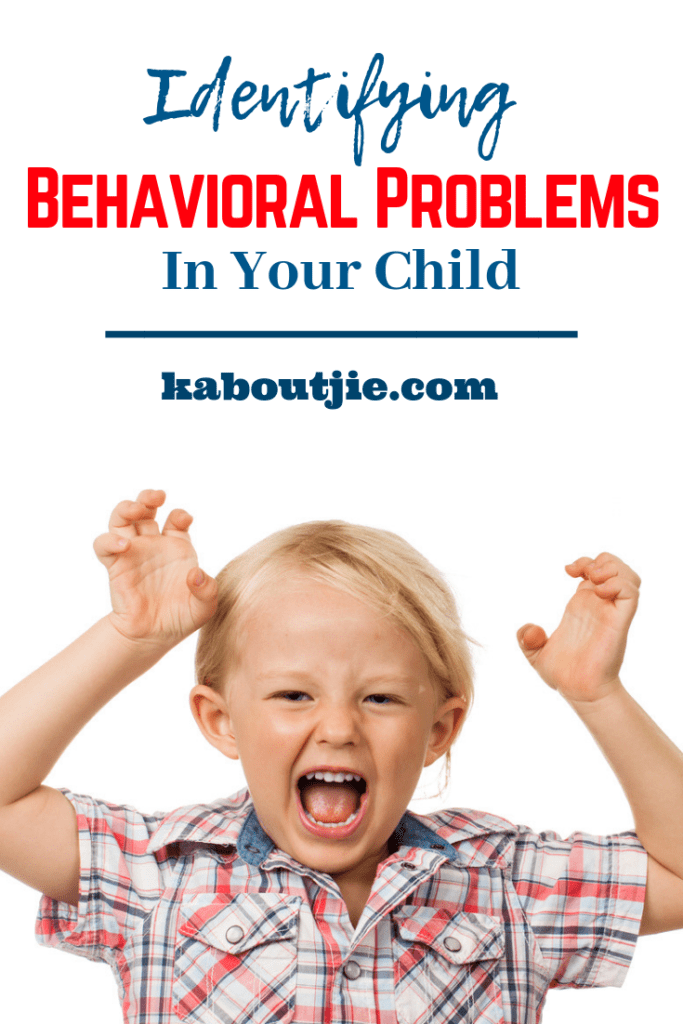 We call such requests “what to do,” as opposed to “what not to do.” nine0003
We call such requests “what to do,” as opposed to “what not to do.” nine0003
So it's important to make your instructions specific, avoid the "not" part, divide tasks into simple steps, and give regular praise for completing them.
5. Create a schedule for your child where likes and dislikes alternate.
Having a daily routine where the child's desirable activities naturally follow the less desirable activities can greatly improve his behavior. For example, my daughter is cleaning her room, and she knows that after that we will go to the grocery store, which she loves because I let her choose something tasty there. In this case, I can easily use the store as a reward for cleaning the room. nine0003
I can say, "It's time to tidy up the room, pack your things and hang them in the closet." After she does this, I can say, “Great! Great job! Now put these things in a drawer, and when you're done, we'll go to the store and buy something delicious." Now I have increased her motivation to complete the difficult task I have given her.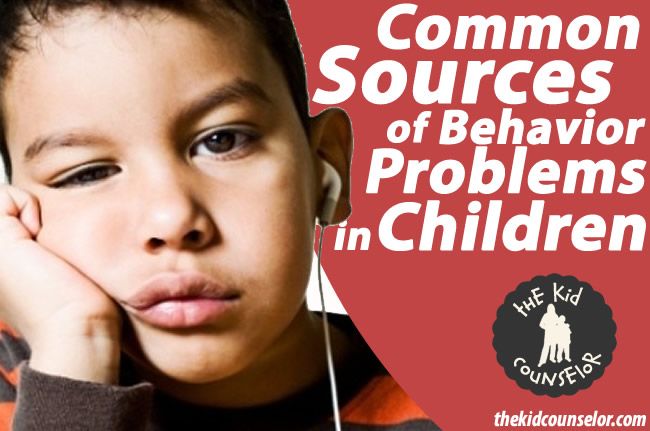
So if I carefully analyze the daily routine, then I can change it so that the events preferred by the child come after some difficult tasks. Thus, her motivation to complete the tasks will become higher, and the likelihood of success will also increase. nine0003
This strategy is called Premack's principle, but very often we call it "grandma's rule" because grandma might say, "Eat the vegetables first, then the dessert." The same is true here.
And after the store, I can say: "We have to go home, we still have to do this and that." And this, too, can be a task that she does not like. So I'll add, "And when you're done with that, we'll play." So that I can analyze what I want to entrust to my daughter, and not make her do all this in the morning, it is better to stretch things out over time, including something pleasant between them. nine0003
6. Never forget that you are an adult here. will stick." The idea is that kids will misbehave, they will. They will swear, they will try to piss you off.
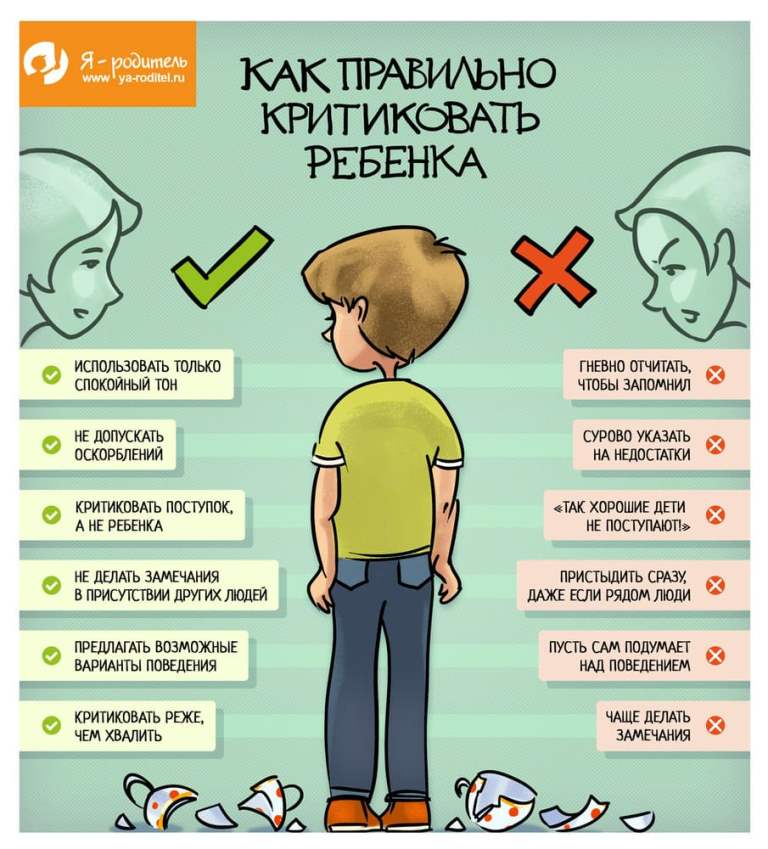 Their actions will cause you fear, anxiety and anger, they will upset you. I often have to remind myself, "Hey, I'm the grown-up here." If my child calls me names, I should not be the second little girl and get upset about it. nine0003
Their actions will cause you fear, anxiety and anger, they will upset you. I often have to remind myself, "Hey, I'm the grown-up here." If my child calls me names, I should not be the second little girl and get upset about it. nine0003 My daughter is still a child, she is learning, she will inevitably make mistakes, but I am already an adult and I should not take her mistakes personally. I take a deep breath and tell myself, “I’m the adult here, I won’t take this as a personal attack. I am calm, I am completely calm. I can handle it."
Because if you overreact to the child's behavior, you can only exacerbate the problem. So sometimes it's very important to take a step back, take a deep breath and remind yourself that you are not perfect and you will make mistakes too, and even if you need a break, it's okay, you can deal with it when you calm down, you don't need to feel guilty. nine0003
Finally, it's important to remember that every instance of problem behavior doesn't just upset us, it teaches us something useful. When a child misbehaves, you can say, “Aha! This moment can teach me something."
When a child misbehaves, you can say, “Aha! This moment can teach me something."
The child does not try to upset and "drive" you. The child is trying to tell you about some problem that needs to be solved. The child is trying to show that she does not know how it is done, or what I want from her. Or the child shows that she does not want to do this. So it's my job as a parent to either teach her how to do it or make sure she gets something out of it so she'll be motivated to do the task next time. nine0003
So yeah, sometimes you have to step back and think, “OK, what does this behavior say? What skill should I teach my child? This does not mean that I have a bad child, this does not mean that I am a bad mother, this is just a moment that communicates a problem that needs to be solved. And we can both use this moment to learn something new.
And it is very important to separate what we, as parents, can control and what is beyond our control. I cannot change the fact that my child has a disability, I cannot change the fact that my child has autism, I cannot change the fact that my child has a paternal character.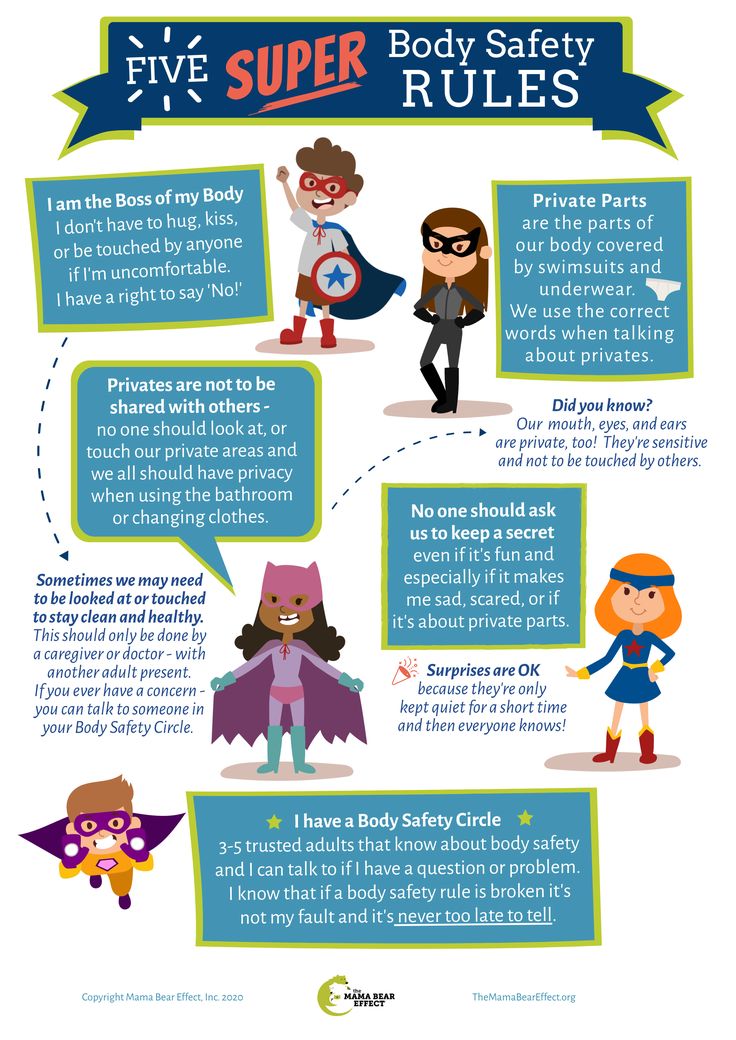 All these reasons that people try to explain behavior, we cannot change. But we can influence those variables that are in the world around us, and which affect behavior much more than we think. nine0003
All these reasons that people try to explain behavior, we cannot change. But we can influence those variables that are in the world around us, and which affect behavior much more than we think. nine0003
We hope that the information on our website will be useful or interesting for you. You can support people with autism in Russia and contribute to the work of the Foundation by clicking on the "Help" button.
ABA-therapy and behavior, Education of children with autism
Problematic behavior is formed in a child already at the age of five home, would not beat the offenders. Where is the line between pranks and potentially dangerous behavior? nine0102
Elena Shpagina: She is aware, in understanding her behavior. Jean Piaget, a well-known Swiss psychologist who dealt with child development, has a description of studies of the moral judgments of children about the heroes of the story: one boy accidentally broke fifteen cups because he was distracted, and the other boy only one, but when he climbed for jam after his mother left kitchens… Who is more to blame? The scientist asked these questions to children and realized that moral consciousness is being formed in children from the age of 4 and most of them by the age of 6-7 understand that breaking even 15 cups by accident is not as shameful as stealing jam without asking. nine0003
nine0003
The main concept of a criminal's personality, which is currently accepted in legal psychology, is based on the peculiarities of a person's legal consciousness and worldview, when he believes that it is possible or permissible to commit this or that act. And this is not directly related, for example, to mental health. You can live your whole life with a psychiatric diagnosis and not commit a single crime and be the nicest person. This is formed by education, in the process of socialization (mastering the norms of life in society). The first institution of socialization is the family. It lays down the rules of relationships with other people: the family environment approves and encourages some behavior, but often the child simply copies from the people around him. Therefore, an example, a role model is so important. nine0003
Punishments and prohibitions should be based on explanations of cause-and-effect relationships of the child's actions. So that the child consciously next time does not repeat such mistakes.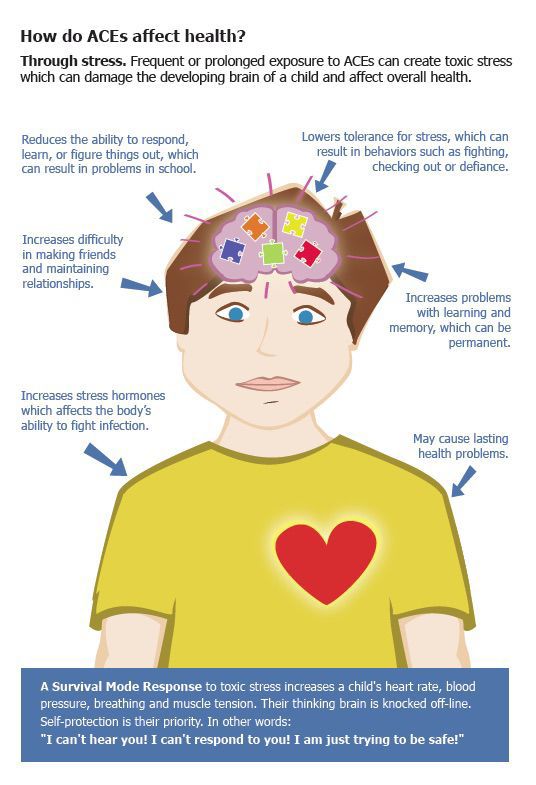 But adults should understand that the ability for conscious behavior and volitional control of their behavior in a child comes only at about 12-14 years old. Prior to this, we form various norms in the child: moral, ethical, legal. It is very important not to ignore the pranks of children, to analyze cases, to discuss these issues, to form the ability to diplomacy, and not to solve problems by force. nine0003
But adults should understand that the ability for conscious behavior and volitional control of their behavior in a child comes only at about 12-14 years old. Prior to this, we form various norms in the child: moral, ethical, legal. It is very important not to ignore the pranks of children, to analyze cases, to discuss these issues, to form the ability to diplomacy, and not to solve problems by force. nine0003
There is a bully in the class who tyrannizes everyone. What about other students and their parents? Why can't this be isolated, transferred to a special school, to individual training, finally?
Elena Shpagina: "Hooligan, little despot and tyrant" is also someone's child. Most often, this is a child who finds himself in a difficult life situation, when parents drink, are addicted to drugs, and are in prison. It happens that such a child is an orphan and is under the care of a grandmother who cannot cope with him. That is, there is simply no one to educate him, and the environment in which he lives dictates his own rules of behavior to him. Often such children fall under the influence of the "street". Of course, prosperous families, parents want to protect themselves from such a bully in the classroom, isolate him from the society of "good children" and send him to a special institution where he will be re-educated. nine0003
Often such children fall under the influence of the "street". Of course, prosperous families, parents want to protect themselves from such a bully in the classroom, isolate him from the society of "good children" and send him to a special institution where he will be re-educated. nine0003
Let's see where? In a psycho-neurological dispensary? He must have a serious diagnosis established by a doctor. Parents or guardians should take care of his health. And he only has a grandmother with her unidentified health diagnoses.
Some categorical parents say that he belongs in prison! On what basis? Criminal liability comes from the age of sixteen, and for many crimes from the age of fourteen. Including hooliganism, but only in parts 2 and 3 of Art. Article 213 of the Criminal Code of the Russian Federation. This is hooliganism committed with aggravating circumstances. A trial must take place, guilt has been proven, but we will again get a new member of society who has embarked on a criminal path. Until the age of fourteen, his parents or guardians are responsible for his offenses. And again we have a grandmother... In order for a child to end up in an institution for orphans, parents or guardians must be deprived of parental rights. There must be very strong justifications for this ...
Until the age of fourteen, his parents or guardians are responsible for his offenses. And again we have a grandmother... In order for a child to end up in an institution for orphans, parents or guardians must be deprived of parental rights. There must be very strong justifications for this ...
What to do with such a bully?
Elena Shpagina: You need to work with a child, accompany him growing up. He does not have parents, the guardian cannot cope, then other public institutions should be included. After all, society is interested that the "pranks" of such children do not develop into sustainable criminal behavior in the future. You can try to start working with such a child as a parent community, connect the "school reconciliation service", for example. Only in socially acceptable ways, in the legal field. After all, if you arrange a "showdown" with such a child from a position of strength, firstly, you can get punished, and secondly, you will demonstrate illegal behavior patterns to your own child.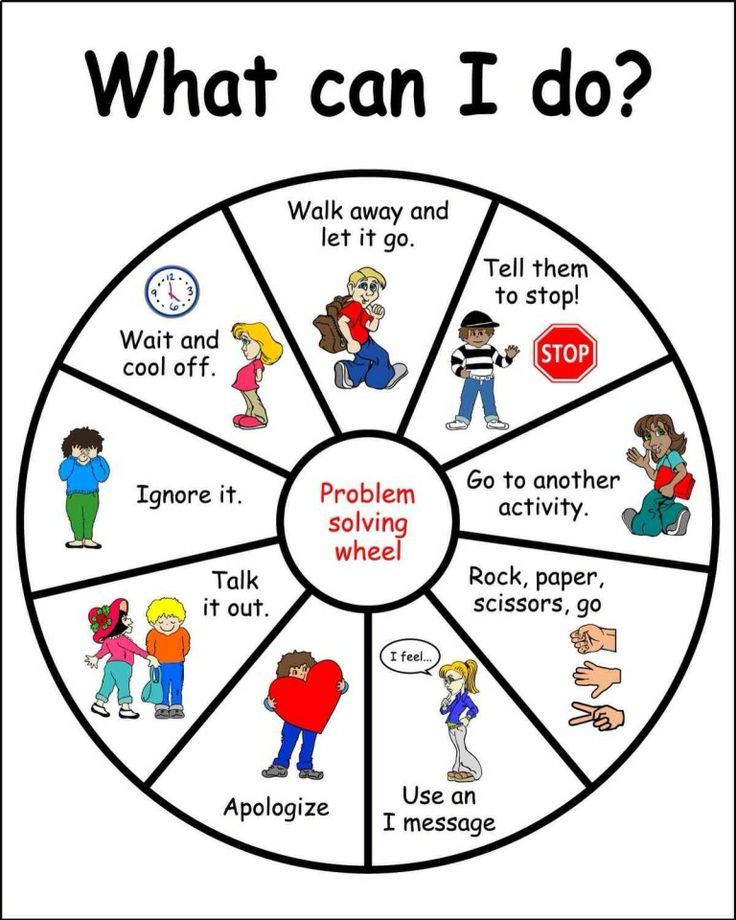 nine0003
nine0003
Here we need to act jointly, comprehensively, together with other interested parties. If all this happens at school, then the first instance is, of course, the school. The school has a class teacher, a social teacher, and a school psychologist. These are specially trained people who can professionally correct the situation. There are psychological and pedagogical technologies for working with deviant children, they are applied. For example, our Department of Legal Psychology at MSUPU develops and supports school reconciliation services, the use of a restorative approach and mediation in resolving school conflicts. nine0003
Teach your children not to be indifferent to violence against others and against themselves, teach them to defend themselves, but in socially acceptable ways. The offender must see that neither the guys in the class nor the adults support him. The activity of such children needs to be directed in a positive direction, it’s just that their own parents did not do much with them.
How can parents know if their child is the victim of aggressive behavior from their peers?
Elena Shpagina: The victim's behavior is very dangerous. Pay attention to a sudden change in your child's behavior. nine0003
If you answered "yes" to these statements, it is most likely true:
- - the child is in a depressed mood,
- - the child avoids classmates,
- - avoids mass events at school,
- - often is sick and does not come to school for other reasons,
- - reacts negatively to the signal of a new message,
- - the child takes time off from lessons, referring to poor health,
- - inflicts cuts, burns on himself.
Start a sensitive conversation. If you have established relationships, then the child will tell, although it will be difficult for him. Do not panic, do not aggravate the situation, do not injure the child with your violent reaction. But don't leave everything to chance.


